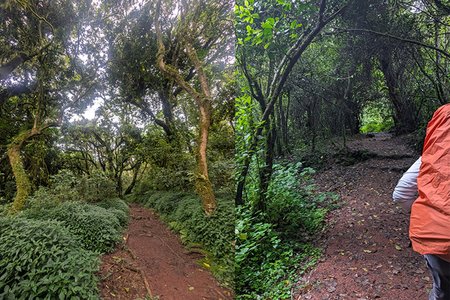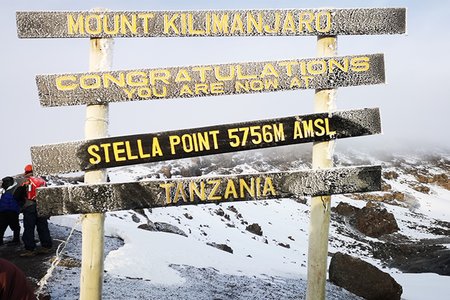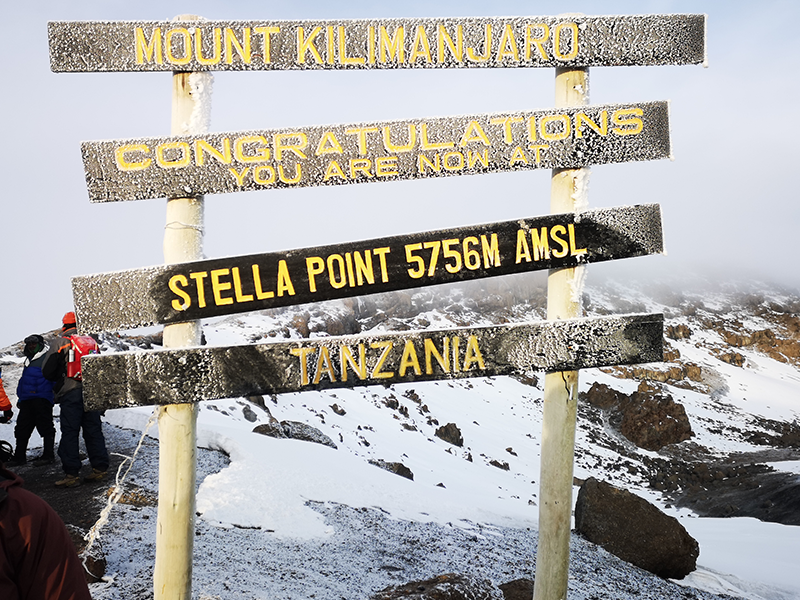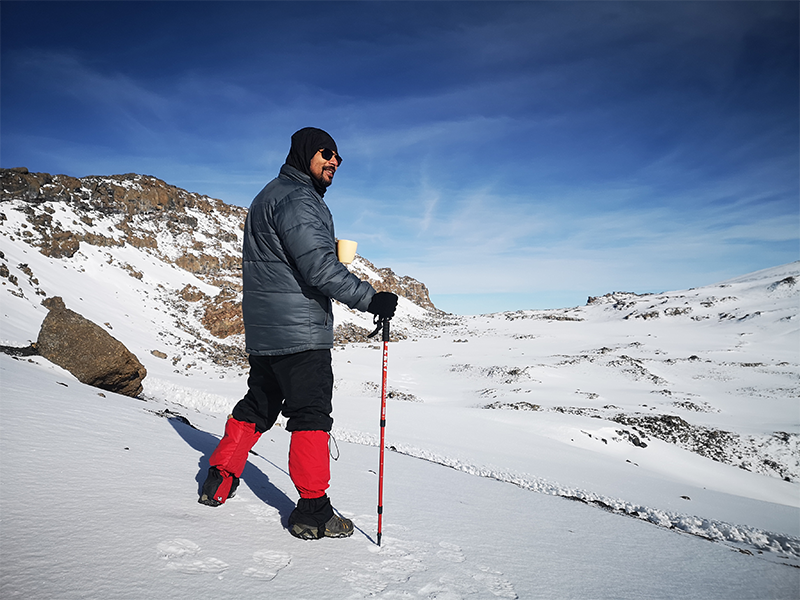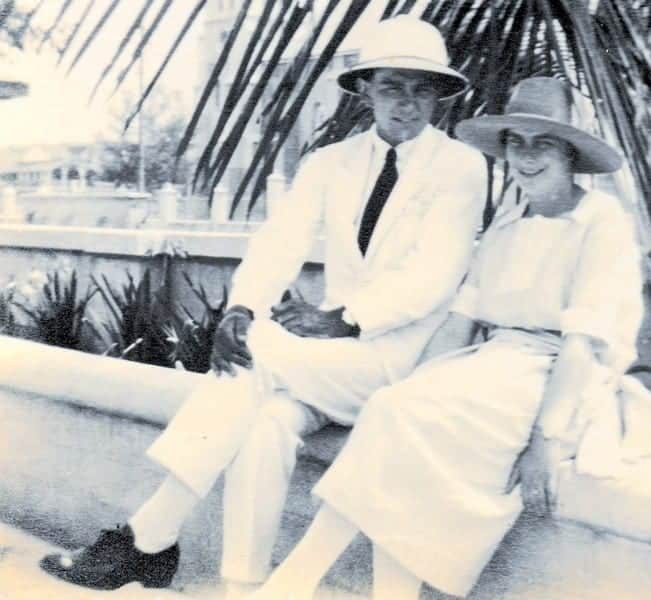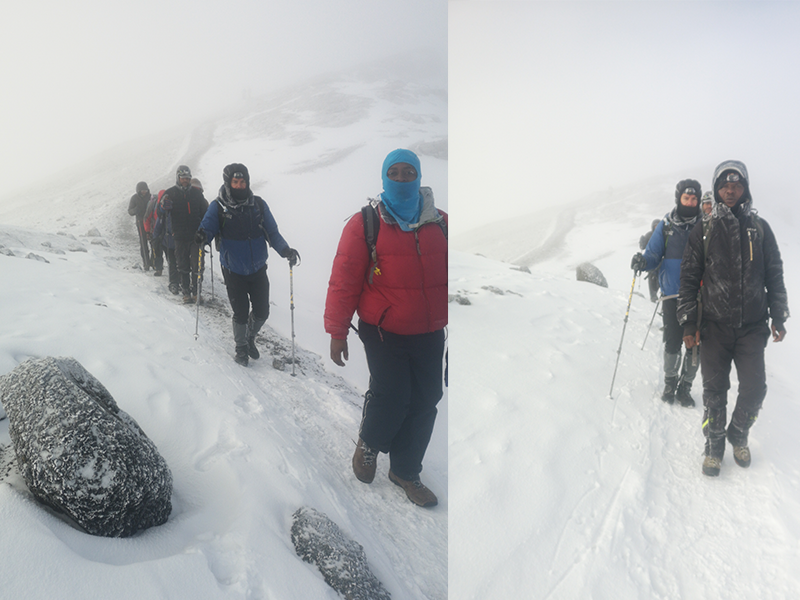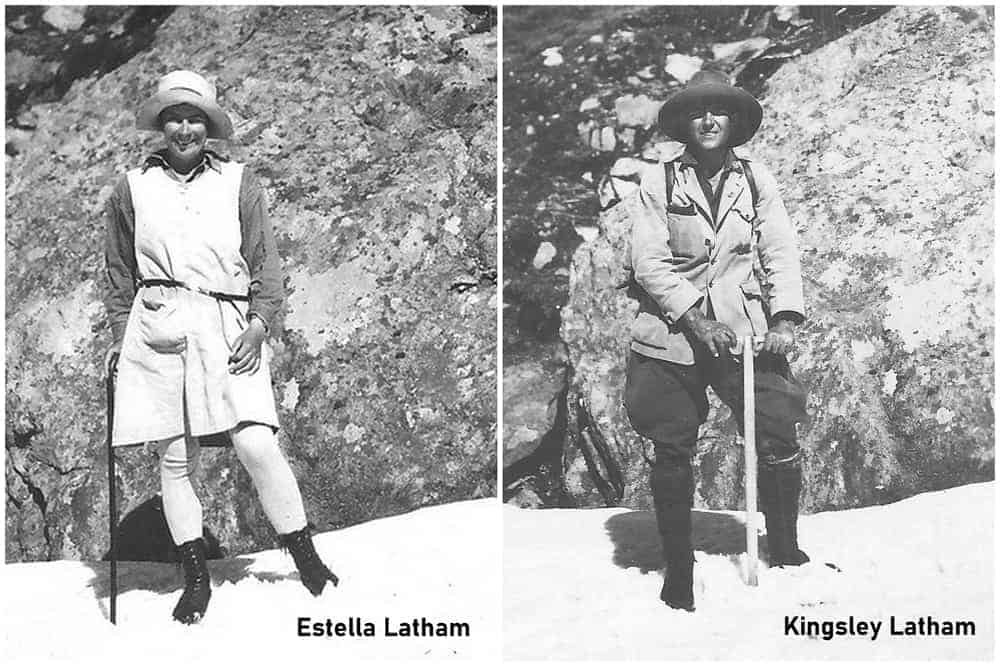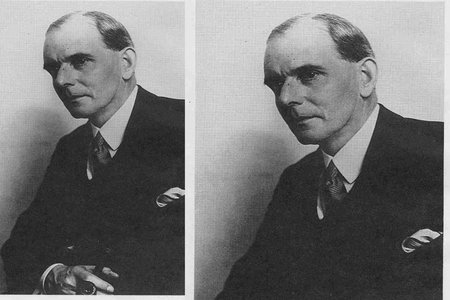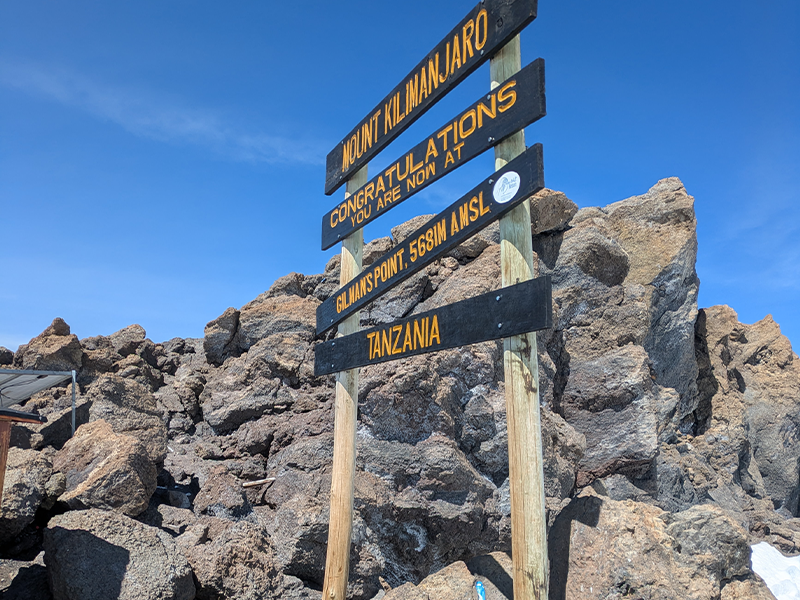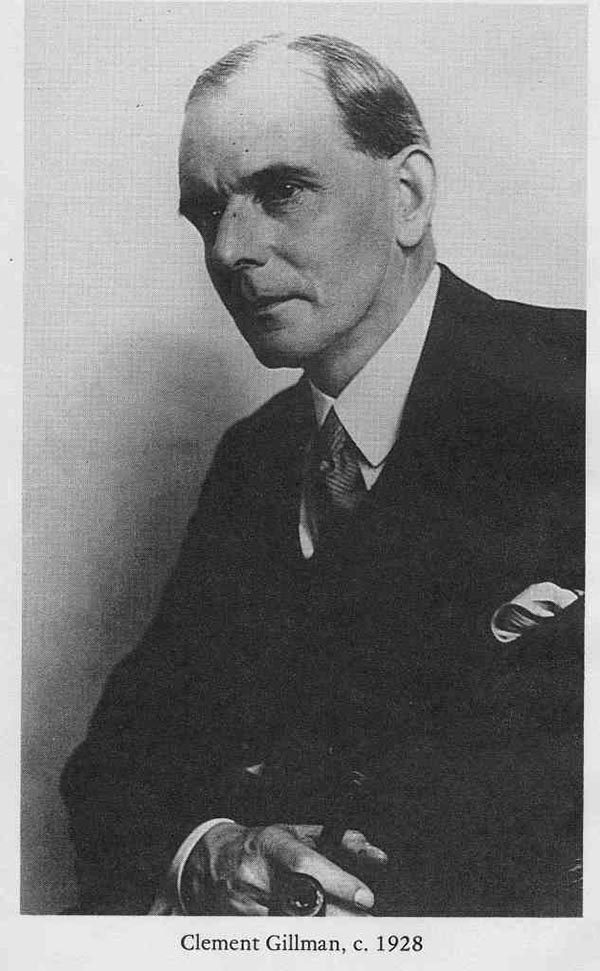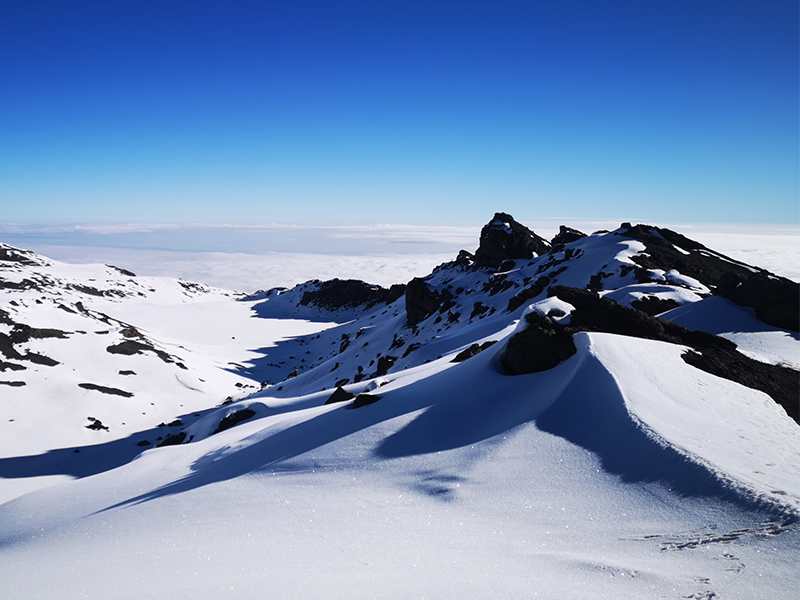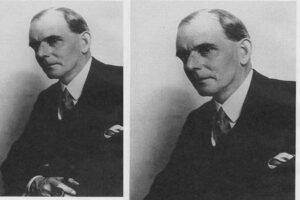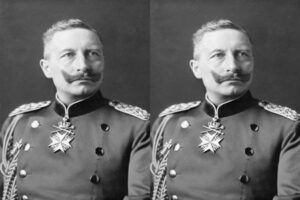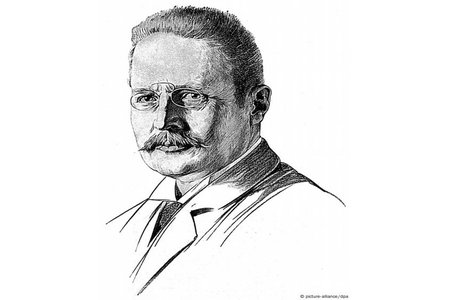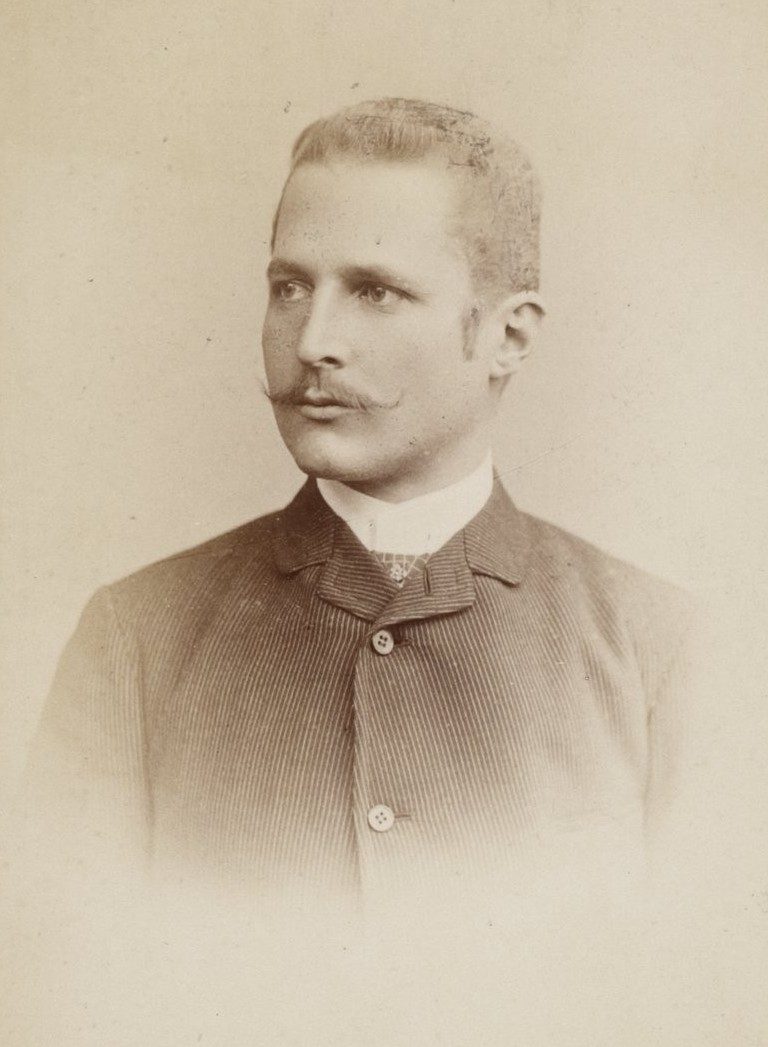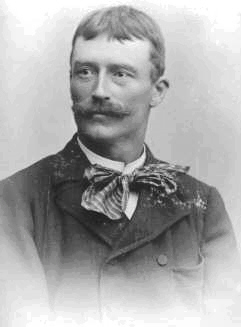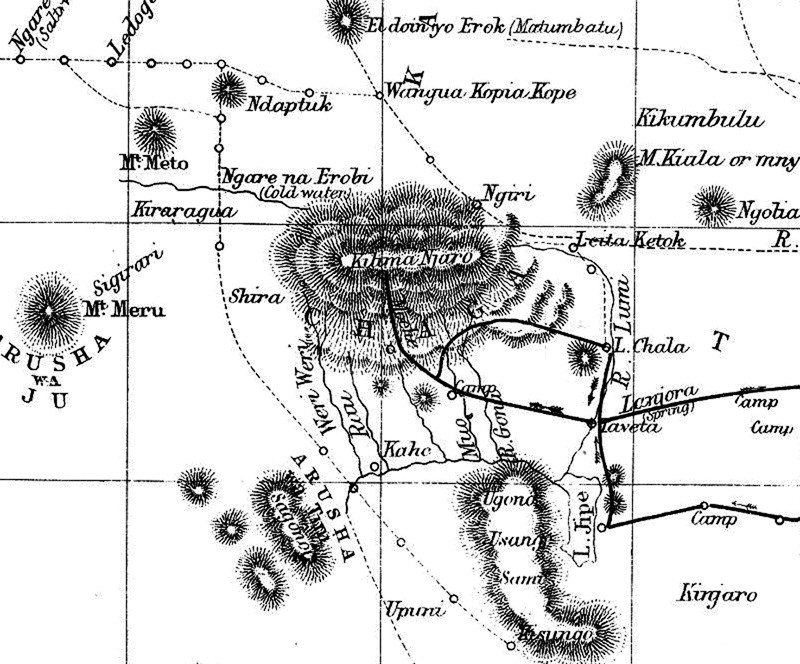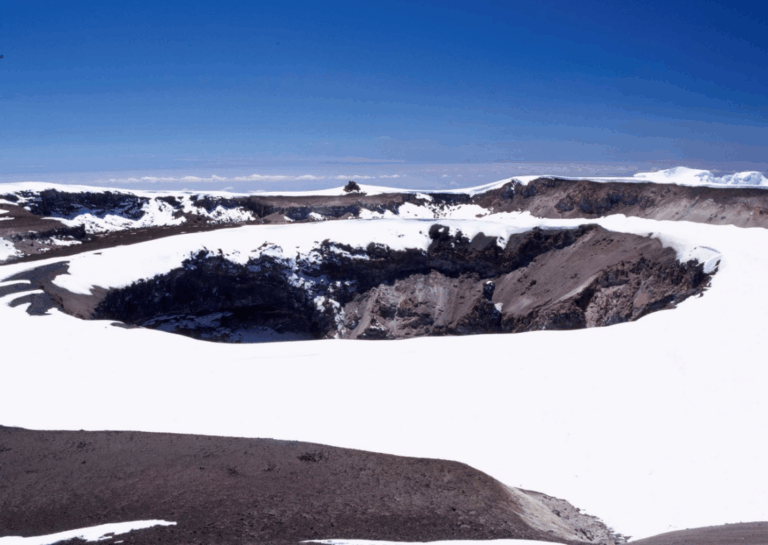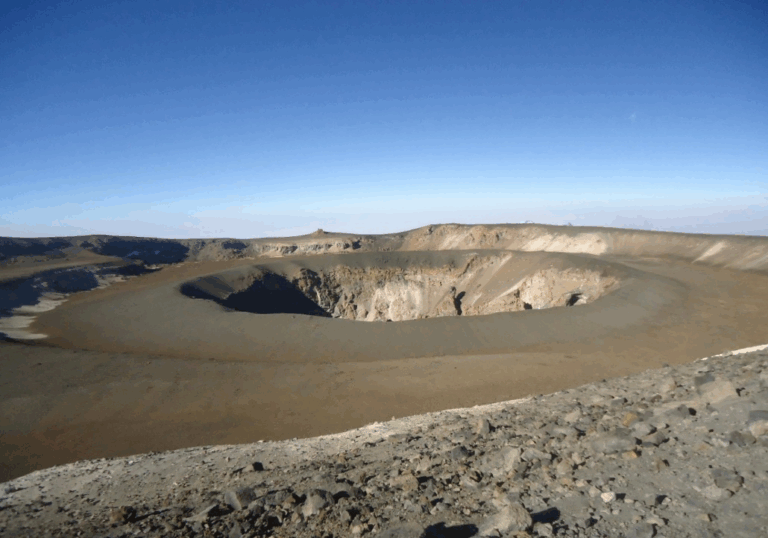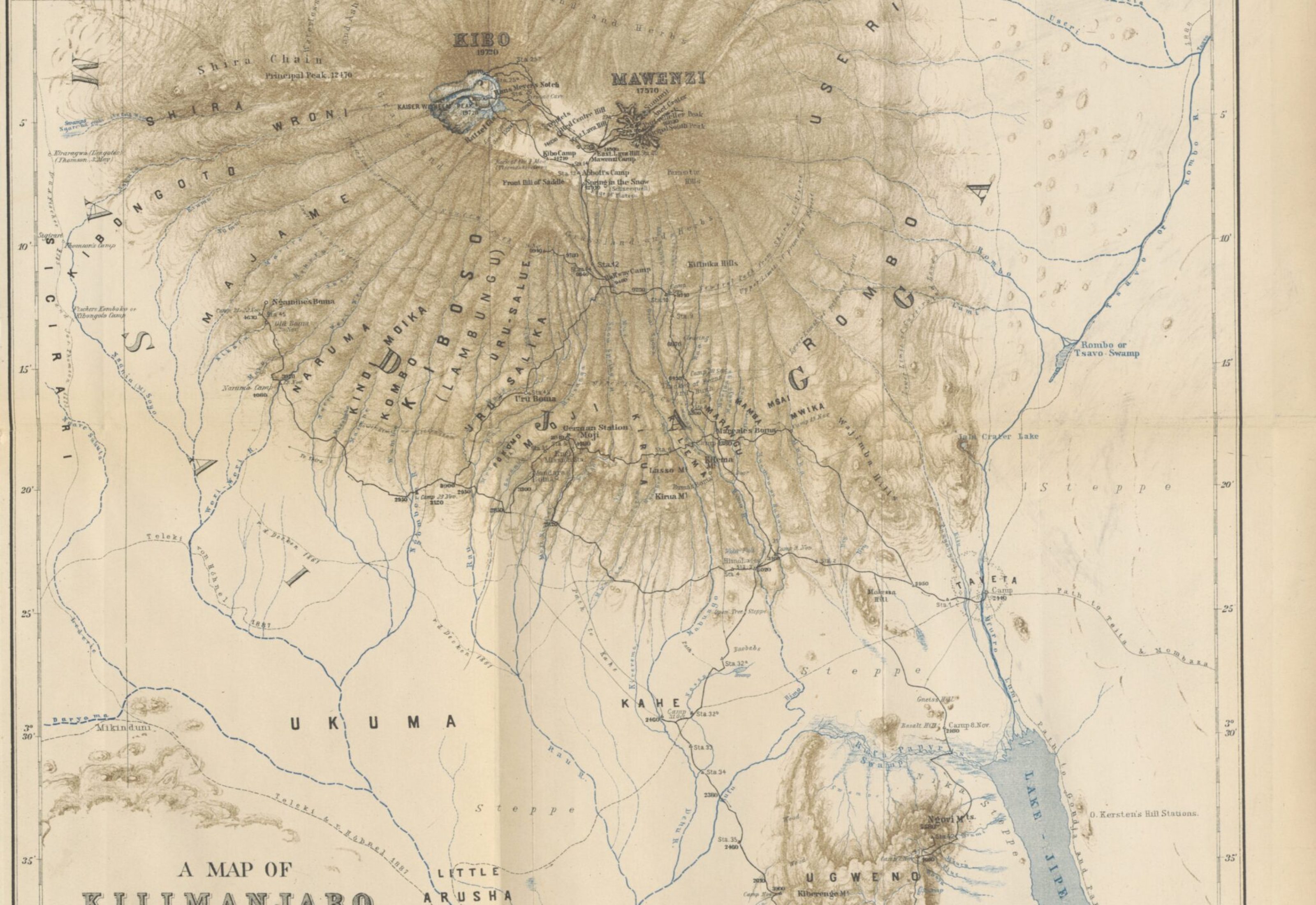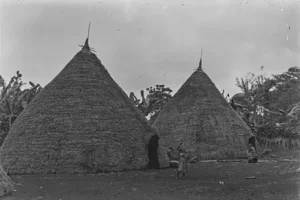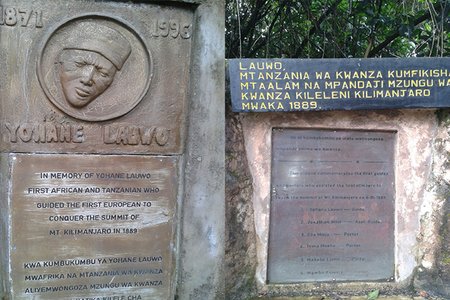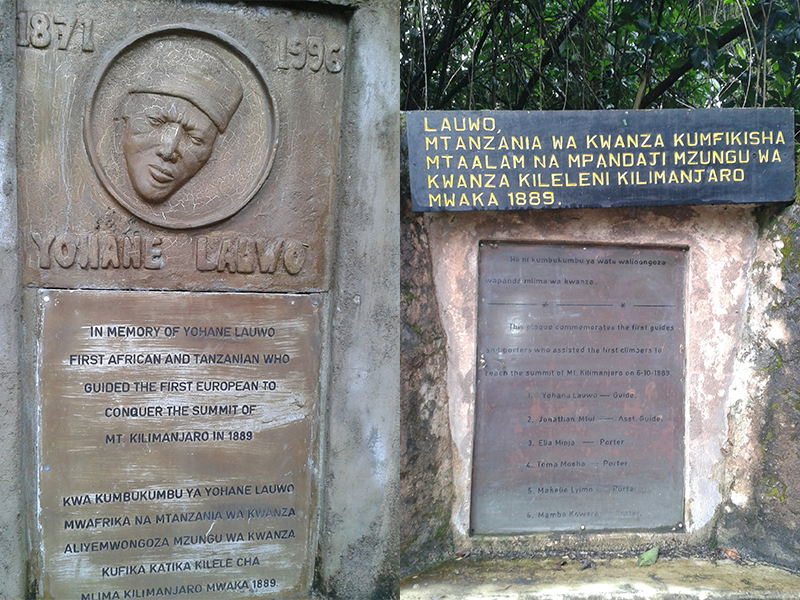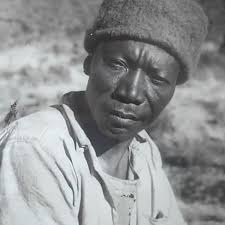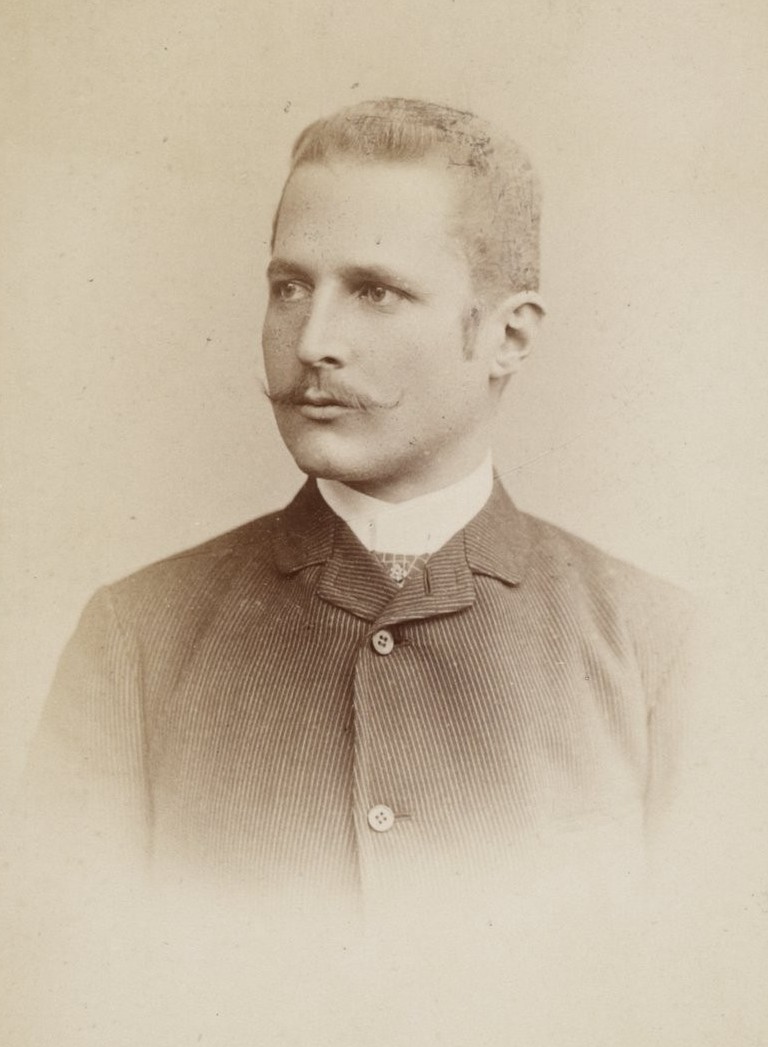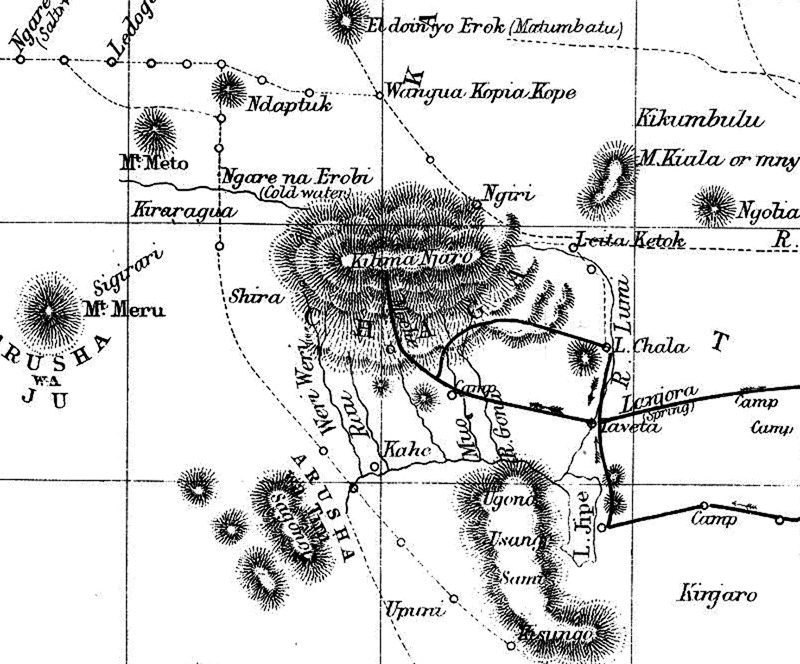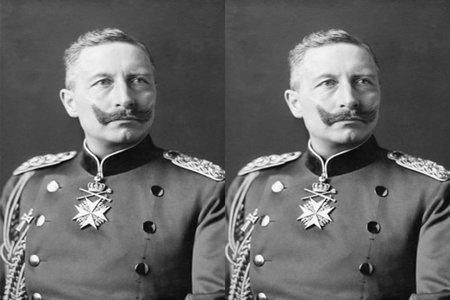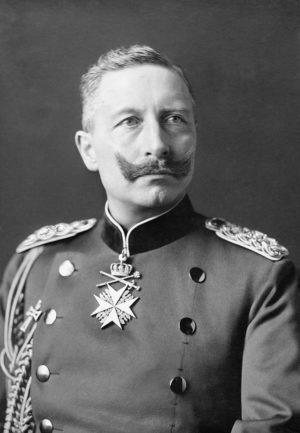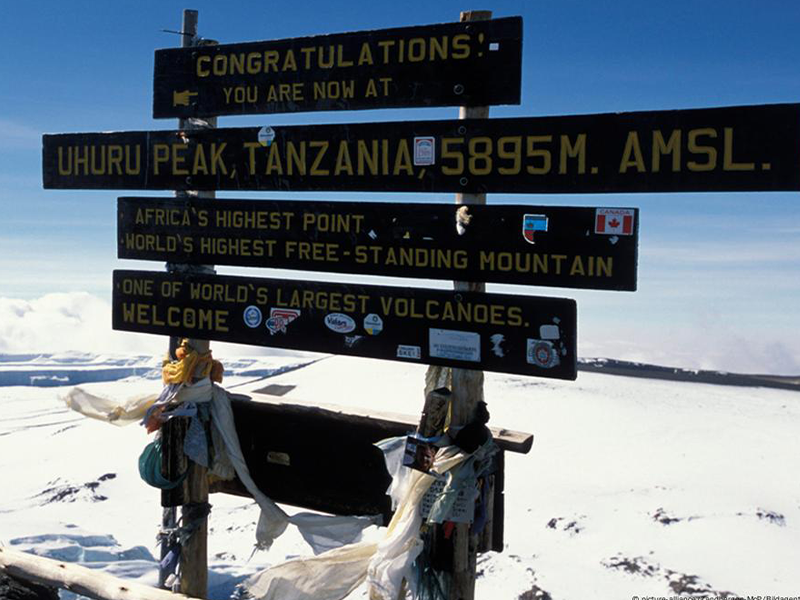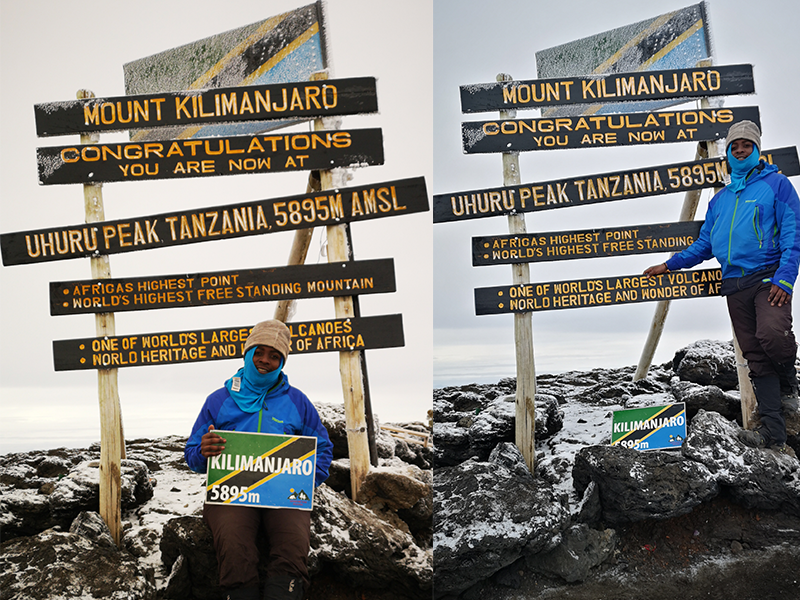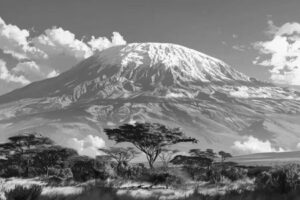Table of Contents
Mount Kilimanjaro’s Ecological Zones Explained | Kili Quests
Mount Kilimanjaro is not only Africa’s tallest peak — it’s a vertical world of diverse climate zones, changing dramatically from the base to the summit. As you climb higher, you pass through five distinct ecological zones, each with its own temperature, vegetation, and wildlife.
In this article, Kili Quests explains each zone in detail — helping you prepare for what you’ll see, feel, and experience on your trek to Uhuru Peak.
This trail also passes through multiple [ecological zones], each with unique vegetation and wildlife(Flora and Fauna).

Cultivation Zone (800–1,800 m / 2,600–6,000 ft)
This is the lowest zone, covering the fertile foothills of Kilimanjaro.
Climate: Warm, humid, and tropical
Vegetation: Coffee farms, banana trees, maize, and sugarcane
People: Chagga communities live and farm here
Notable towns: Moshi, Marangu, Machame
Your trek usually starts above this zone, but you’ll pass through it while traveling to the trailhead.
Montane Forest Zone (1,800–2,800 m / 6,000–9,200 ft)
This is one of the richest biodiversity zones on Kilimanjaro.
Climate: Moist, foggy, with frequent rainfall
Vegetation: Dense tropical rainforest with ferns, fig trees, and lichens
Wildlife: Blue monkeys, black-and-white colobus monkeys, bushbuck
Experience: Lush scenery, birdsong, muddy trails
This zone is often wet and slippery — good waterproof boots and gaiters are essential.
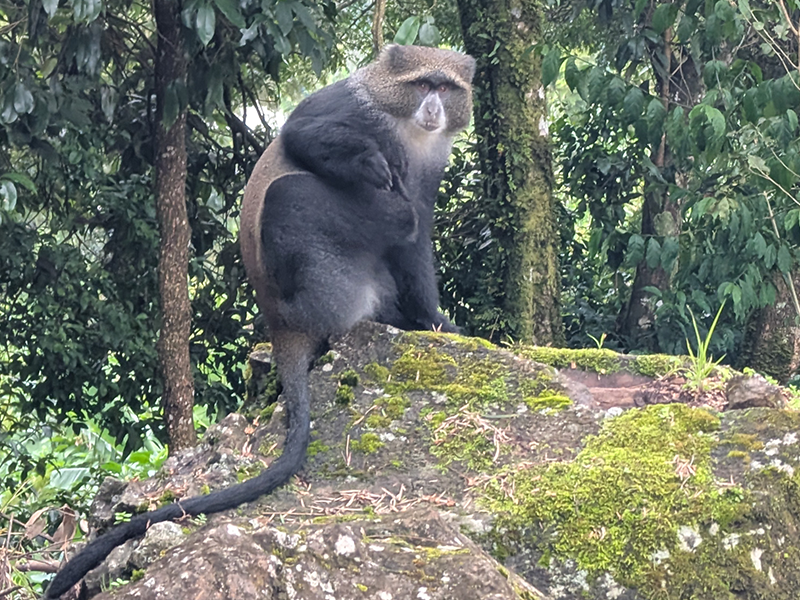
Heather & Moorland Zone (2,800–4,000 m / 9,200–13,100 ft)
Here, the forest thins out into a surreal landscape.
Climate: Cooler, with sunny days and cold nights
Vegetation: Heath shrubs, giant groundsels, lobelias, and moss
Scenery: Open hills, valleys, and volcanic boulders
Sunlight: Intense UV during the day; sunscreen needed
You’ll notice a change in oxygen levels here, and altitude symptoms may begin to appear.
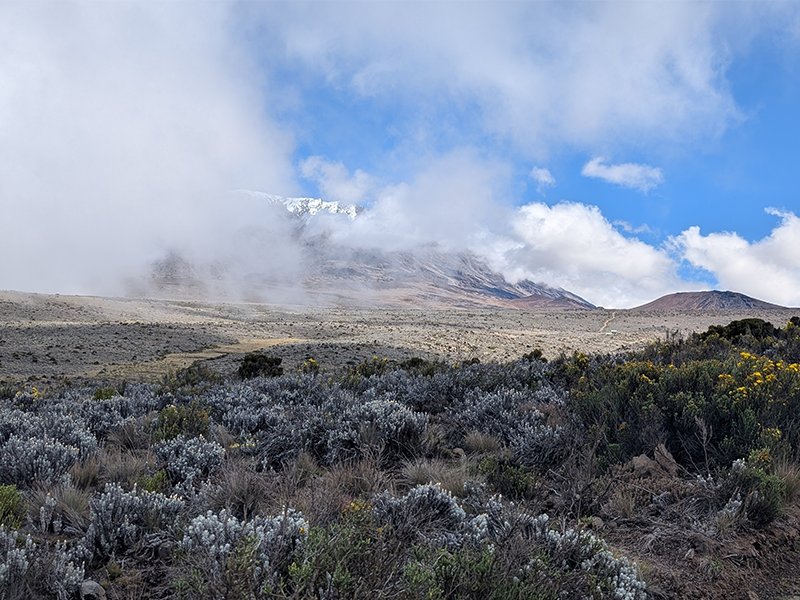
Alpine Desert Zone (4,000–5,000 m / 13,100–16,400 ft)
A dry, wind-blasted region with extreme temperature swings.
Climate: Very dry, hot in daytime, freezing at night
Vegetation: Sparse — mostly hardy lichens and small grasses
Terrain: Loose gravel, ash, and volcanic rock
Feel: Isolated, otherworldly, and vast
This is where you begin to feel like you’re walking on another planet.
Wondering how cold it really gets on Kilimanjaro? Find out what to expect at night, camp by camp, in our Night Temperatures Guide

Arctic Zone / Summit (5,000–5,895 m / 16,400–19,341 ft)
The final stretch to Uhuru Peak is harsh and unforgiving.
Climate: Freezing temperatures, high winds, low oxygen
Vegetation: None — this is a polar desert
Terrain: Glaciers, ice fields, volcanic scree
Experience: Physically intense, mentally rewarding
Despite the difficulty, reaching this zone means you’re almost at the summit of Africa.

Why Understanding the Zones Matters
Gear prep: Knowing the zones helps you pack correctly for temperature and terrain
Mental prep: Each zone presents its own challenges
Appreciation: It’s rare to walk from rainforest to glaciers in a single journey — Kilimanjaro makes it possible
Final Thoughts
Climbing Mount Kilimanjaro is like walking from the equator to the Arctic, all in under a week. Each ecological zone is a chapter in your journey — from warm farmland to icy summit. Understanding these zones helps you prepare better and appreciate the incredible natural transitions along the way.
Climb with Experts Who Know the Zones
At Kili Quests, our guides are trained to navigate every zone — from dense forests to glacial ridges. We help you adjust to each stage of the mountain with expert pacing, acclimatization, and gear advice.Make sure to check our [Essential Kilimanjaro Packing List 2025] to avoid missing anything important.
If you’re new to high-altitude trekking, our [Altitude Sickness Tips & Risks] guide can help you stay safe.
Related Articles
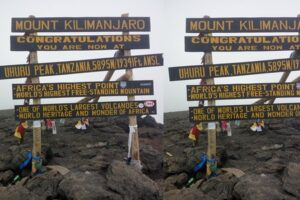
Kilimanjaro Summit History: The Meaning of Uhuru Peak
April 15, 2025
No Comments
Table of Contents Uhuru Peak? The Story Behind the Name | Kili Quests Uhuru Peak is not only the summit of Mount Kilimanjaro, but

Kilimanjaro’s Ecological Zones & Altitude Guide Explained
April 15, 2025
No Comments
Table of Contents Mount Kilimanjaro’s Ecological Zones Explained | Kili Quests Mount Kilimanjaro is not only Africa’s tallest peak — it’s a vertical world
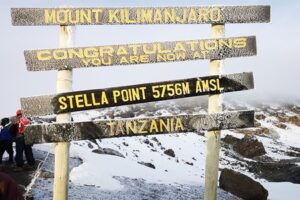
Stella Point: Why It’s Named That & Kilimanjaro History
April 15, 2025
No Comments
Table of Contents Why Is It Called Stella Point? The Story Behind the Name | Kili Quests On your final push to the summit of


